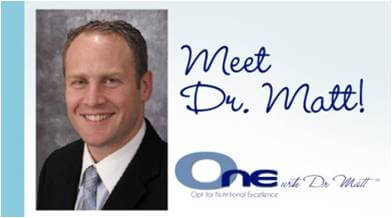 There was a blanket of fresh snow covering the Island when my wife and I welcomed our first child into the world a few weeks ago. The image of purity fresh snow portrays stands in stark contrast to what I see in my profession on a daily basis. The world we live in is toxic and as we go through life our human bodies become loaded with toxic chemicals. Call it an occupational hazard, but as a health care professional, my mind immediately questions whether my beautiful newborn is entering the world filled with the same chemicals as her parents. Unfortunately, the hospital doesn’t yet test umbilical cord blood for environmental toxins.
There was a blanket of fresh snow covering the Island when my wife and I welcomed our first child into the world a few weeks ago. The image of purity fresh snow portrays stands in stark contrast to what I see in my profession on a daily basis. The world we live in is toxic and as we go through life our human bodies become loaded with toxic chemicals. Call it an occupational hazard, but as a health care professional, my mind immediately questions whether my beautiful newborn is entering the world filled with the same chemicals as her parents. Unfortunately, the hospital doesn’t yet test umbilical cord blood for environmental toxins.
A recent study by the Environmental Working Group tested umbilical cord blood of minority newborns and found 287 toxic chemicals. The EWG concluded, “Of the 287 chemicals we detected in umbilical cord blood, we know that 180 cause cancer in humans or animals, 217 are toxic to the brain and nervous system, and 208 cause birth defects or abnormal development in animal tests.”
The good news about toxicity in our systems is that a proactive position can go a long way. Because you cannot necessarily see or feel toxins, our inability to sense a toxic buildup is troubling; especially given the EPA’s estimate of 80,000 chemical toxins present in our modern world. The toxins that build up in humans are termed persistent bioaccumulative and toxic chemicals, or PBTs for short, many of which have never undergone rigorous examination and the long-term consequences are potentially disastrous to human health.
Ignorance is no longer an excuse. Just think, once upon a time we thought it was safe for young children to play on a DDT saturated lawn. Today, we know better.
Thankfully, recent shifts in New York State policy are positive signs of hope. Just before the New Year the Interagency Committee on Sustainability and Green Procurement approved a policy to direct all NY state agencies to consider avoiding 85 toxic chemicals, listed on a “Chemical Avoidance List.” With 8 billion a year in purchasing power, these state agencies can really make a dent on what manufactures put in their products.
A major challenge PBTs present is their effect on the endocrine and nervous system. The PBTs have an uncanny ability to disrupt glandular function. They appear to mimic the appearance of hormones and attach to receptor sites on the thyroid, blocking normal thyroid function.
How Do I Detox Safely?
Aside from eating healthy organic foods, avoiding personal care products that contain industrial chemicals, and eliminating our consumption of water from plastic bottles, what can we do to protect ourselves and improve our body’s ability to respond to PBTs?
The best and most natural detoxification system on the planet is the human body. Our bodies have an ability to eliminate toxins. Here’s how: Toxins are processed for destruction in the liver. The liver, through specific biochemical pathways, makes toxins safe enough to re-enter the blood stream for elimination through the sweat glands, skin, urine, and bowels. In fact the skin is essentially the largest organ of elimination. In order for the liver to properly perform its natural function, specific nutrients are needed. When our toxic burden is increased the liver increases its demand for the nutrients that help to detoxify.
A novel approach to assisting ourselves in a toxic world is to bombard the liver and cells with needed nutrients. While the body makes many of the chemicals it needs to detoxify, it appears that overuse has stressed and fatigued our systems. For example, our cells naturally make a chemical called Glutathione from amino acids we consume in our diet. Glutathione is a strong detoxifier that helps the body eliminate harmful environmental toxins and by-products of metabolism. Once Glutathione does its job, like good paper, it’s recycled by the body to be used again. However, when the liver is over-burdened with alcohol, pollutants, fatty foods, sedentary lifestyle, stress, and medications, the liver becomes unable to recycle Glutathione. The result is that cells become unable to detoxify properly. The beginning of a viscous cycle sets in leading to toxic buildup.
Other supplements assist the body’s ability to detoxify, including milk thistle, zinc, plant enzymes and alpha lipoic acid. Eating fresh green leafy vegetables assists detoxification efforts. Emerging research supports a model of integrating novel nutritional methods and medical protocols to treat illness before it fully appears.
Trying to absolutely discern individual toxic buildup is challenging, due to the grotesquely high number of potential toxins that would be required to test for in the blood. However, proactive practitioners that cross disciplines from traditional physicians, naturopaths, chiropractors and nurse practitioners are taking the initiative to routinely test children and adults for objective toxic blood markers and the resulting hormonal disturbances associated with toxic build-up. Constitutionally, a person can feel symptoms of underlying toxicity, feeling worn down, loss of libido, and even depressed when toxic. Practitioners view blood results for heavy metals, vitamin and mineral deficiencies, and hormonal imbalances. Once identified the proper supplements are used to strengthen internal defenses. Keeping our defenses strong we move about our world informed and less fearful of the dangers present in our environment. Ideally, as we continue to make positive non-toxic choices in the marketplace, our environment changes for the better.
Dr. Matt Lewis is a New York Board Certified Wellness Chiropractor and Clinical Director at ONE with Dr. Matt. He is also the consulting doctor for Island Wellness, a Long Island-based supplement company, and a health and wellness contributor to the Long Island Press.



























